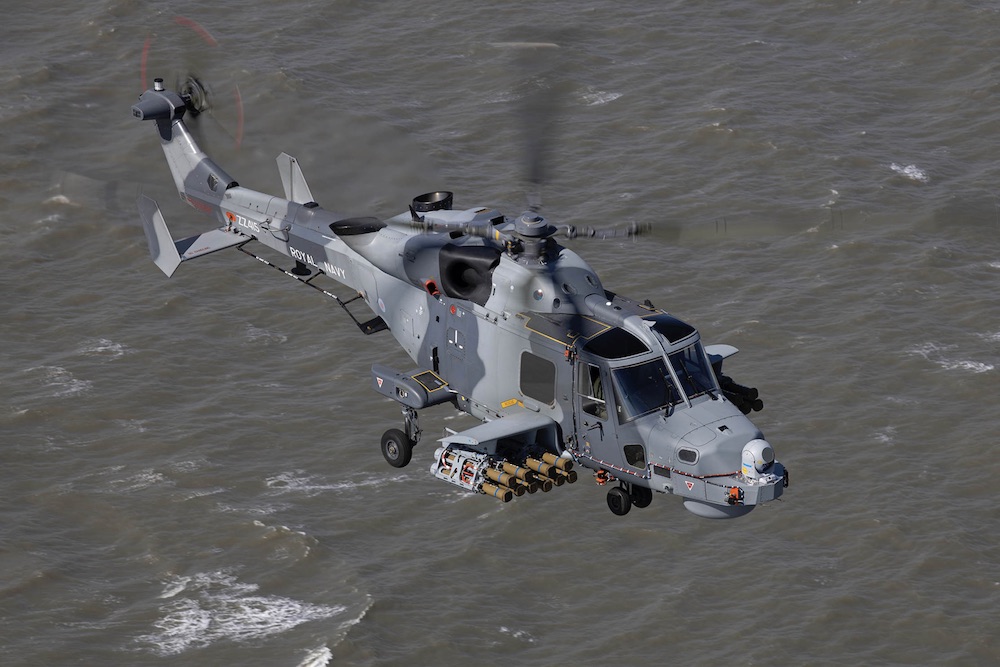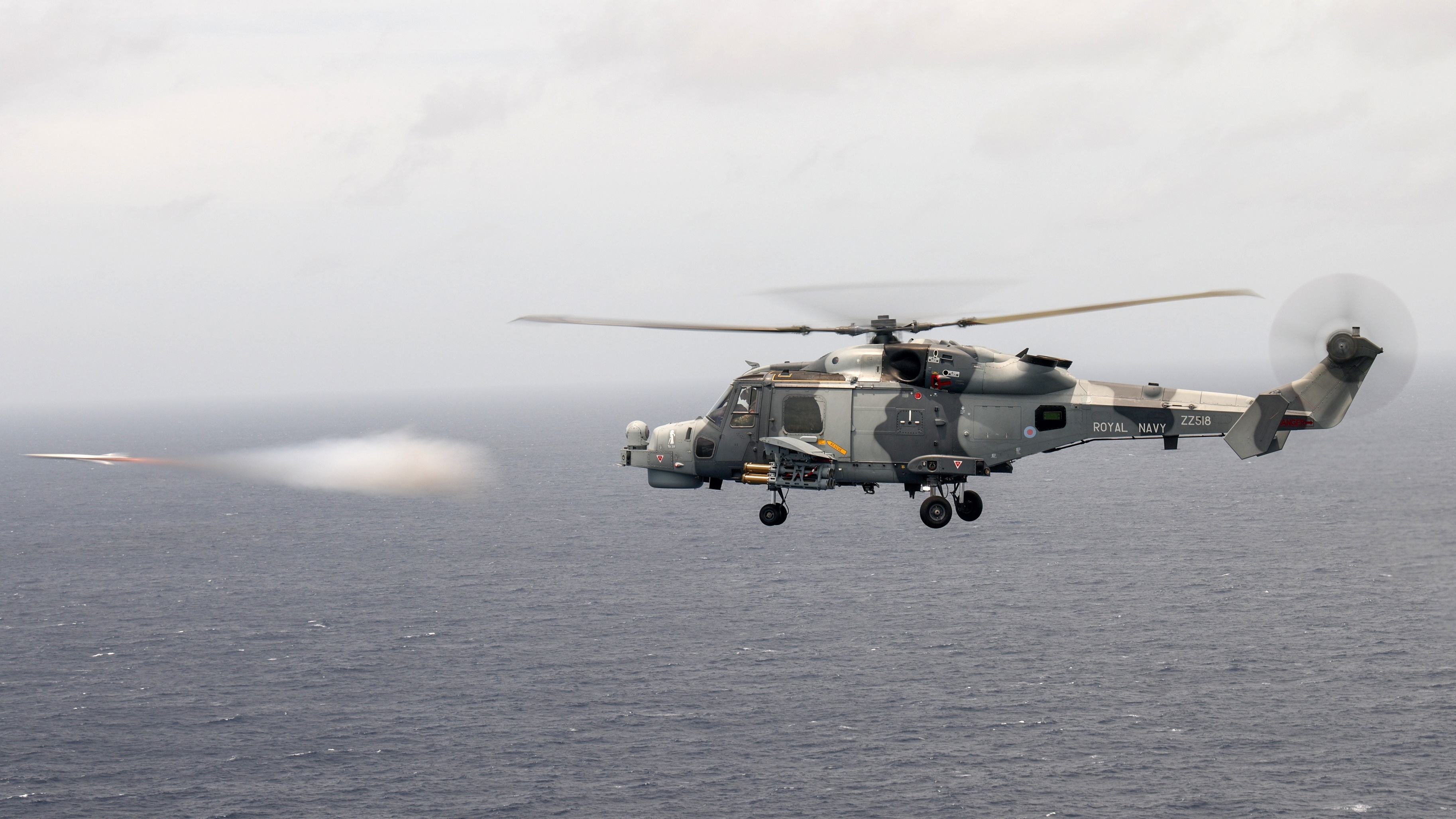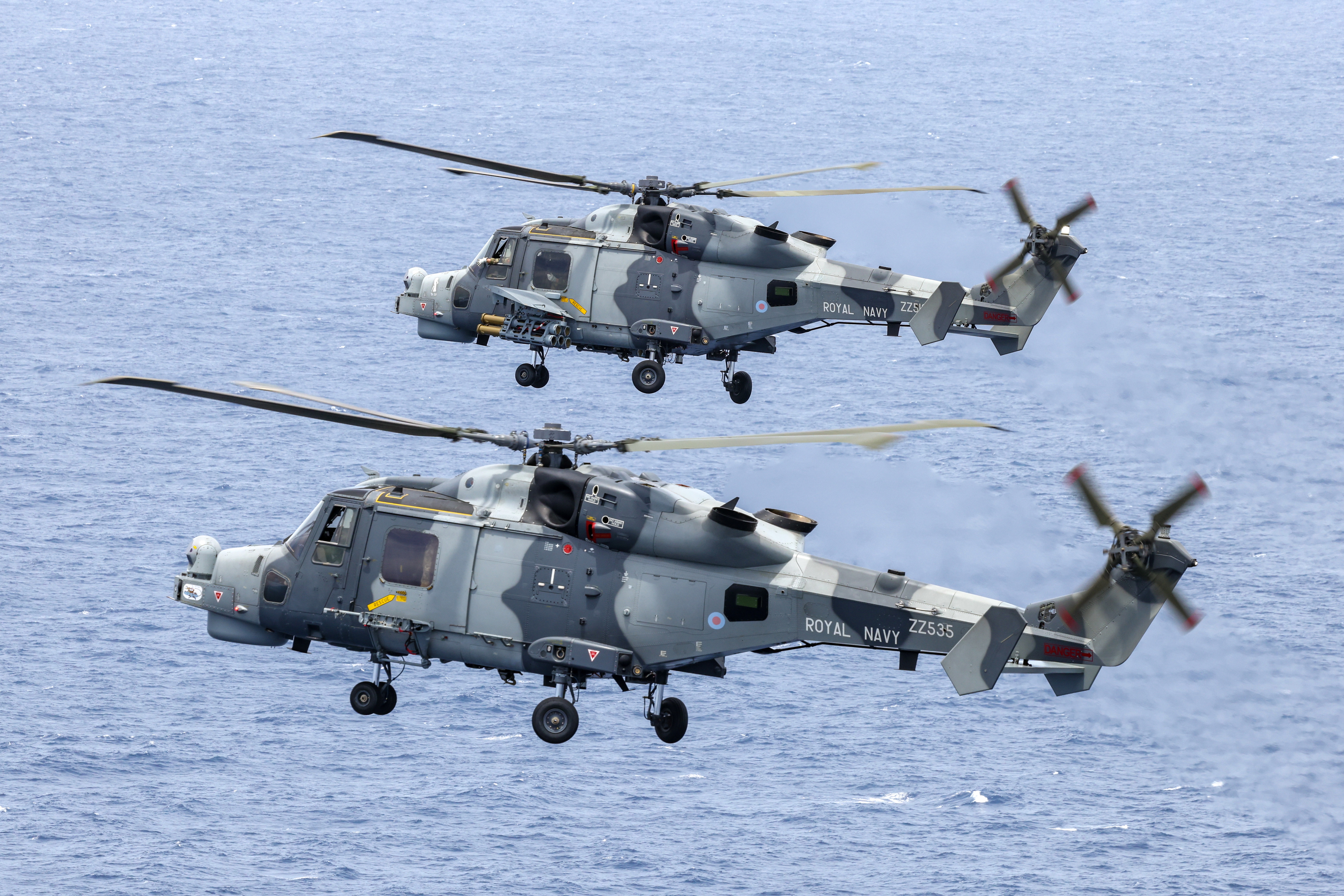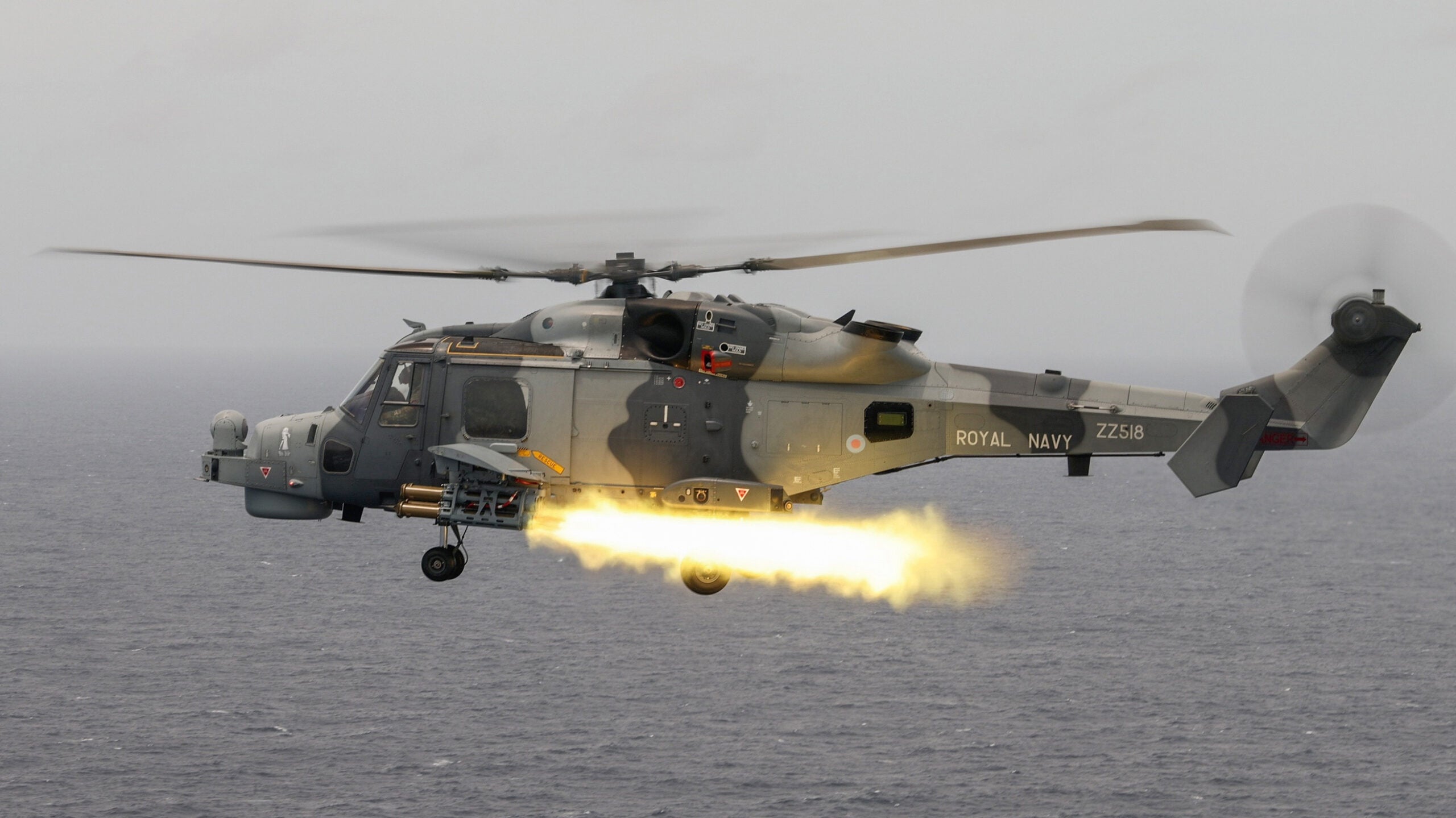A British Royal Navy Wildcat maritime helicopter has fired a Martlet missile for the first time while deployed operationally. In its initial air-launched application, the lightweight missile is primarily intended to protect the Royal Navy’s two new aircraft carriers from attacks by swarms of small boats, as well as other maritime targets, part of a wider effort to reintroduce carrier strike capabilities that had been lost when the United Kingdom retired its last previous flattops.

The live firing campaign, conducted in the Bay of Bengal as part of the Carrier Strike Group 21 (CSG21) deployment centered around the aircraft carrier HMS Queen Elizabeth, is an important milestone for the Royal Navy as it overhauls its surface strike capabilities to address new kinds of threats.
The debut operational firing of the Martlet Lightweight Multirole Missile, or LMM, took place on October 16 but was only confirmed by the Royal Navy today. A Wildcat HMA2 from 815 Naval Air Squadron’s 219 Flight, deployed aboard the Type 45 destroyer HMS Defender as part of CSG21, fired the missile, which successfully hit an inflatable “killer tomato” target.

After transiting the Strait of Malacca, CGS21 had entered the Bay of Bengal earlier this month and then took part in the Maritime Partnership Exercise, or MPX2021, alongside the U.S., Australian, and Japanese navies.
“Martlet is a new air-to-surface lightweight multi-role missile recently introduced into service for the Wildcat helicopter and provides an offensive and defensive capability against small boats and maritime targets that may pose a threat to the Carrier Strike Group,” said Captain James Blackmore, Carrier Strike Group’s Air Wing Commander. “This first firing during an operational deployment not only gives confidence in the end-to-end weapon kill chain but also offers an overt demonstration of one of the many strike capabilities provided by the Air Wing from within the Task Group.”
Each Wildcat HMA2 is able to carry up to 20 Martlets on the Leonardo Weapon Wing – a shelf-like stub wing with 10 containerized rounds on each side of the helicopter. Currently, however, Navy Lookout
reports that a maximum of 10 missiles can be carried by each Wildcat, due to “aerodynamic issues.”
The Navy has confirmed that Martlets are available for all Wildcats deployed within CSG21, part of what it describes as “the ring of protective steel” around the Queen Elizabeth. In addition to the Type 45 destroyers HMS Defender and Diamond, Wildcats are embarked on the Type 23 frigates HMS Kent and Richmond.
This, however, is not the first time that a Wildcat has test-fired a Martlet. That happened off the coast of Wales in April/May last year, but that was trials work, rather than a test by a frontline squadron under operational conditions. Before that, the LMM had also been tested aboard the Royal Navy Type 23 frigate HMS Sutherland, in trials that you can read more about here.

The Wildcat HMA2 is the Navy’s standard multirole helicopter for operations from frigates and destroyers, replacing the previous Lynx, from which it is derived. As well as anti-surface warfare, its missions include force protection, counter-piracy, and antisubmarine warfare.
The Wildcat carries a WESCAM MX-15Di turret with electro-optical and infrared sensors to detect threats, including vessels with small radar and thermal signatures, including against severe background clutter. The turret’s laser designator then guides the laser-beam-riding Martlet to its target.

The light component of the U.K. Ministry of Defense’s Future Anti-Surface Guided Weapon program, or FASGW, the Martlet weighs less than 30 pounds and travels at a speed of Mach 1.5. Data provided by the manufacturer asserts that the basic LMM has a range exceeding 3.2 nautical miles, although launching it from a moving helicopter could potentially extend this. According to the Royal Navy, targets can be acquired by the Wildcat at ranges of between four nautical miles and around 0.25 miles.


Martlet also allows the Wildcat to engage certain aerial targets, primarily unmanned aerial vehicles, and other maritime helicopters. This is likely to be very much a secondary role but could still be important, especially considering the relatively limited air defenses installed on the two Queen Elizabeth class carriers, a subject that we have examined in the past.

Martlet has been prioritized so far under FASGW, a reflection of the particular concern given to high-speed maneuvering targets, but the same program is also introducing another missile to the Wildcat. This is the Sea Venom, which has already undergone live-fire trials with manufacturer MBDA, and which is a high-subsonic sea-skimming missile intended for use against larger warships and shore-based installations such as missile batteries and radar stations. The Sea Venom has an imaging infrared seeker, a two-way datalink, and a semi-armor-piercing blast/fragmentation warhead. The Wildcat will be able to carry up to four Sea Venoms or a mix of Sea Venoms and Martlets.

Compared to Sea Venom, Martlet is a lower-cost weapon optimized for use against asymmetric targets such as small high-speed naval craft, suicide boats, or other unmanned surface vessels, including those operating in swarms — the kinds of threats that are becoming an increasing concern for navies operating in the Persian Gulf, off the Gulf of Aden, and elsewhere.
The Royal Navy, for its part, is already well aware of the potential hazards posed by small boat swarms, with direct experience of the threat in the Persian Gulf, where it has provided commercial shipping with close escorts.
In the Pacific, China is making no secret of its interest in being able to field swarms of drone boats, demonstrating that these capabilities sometimes associated with non-state actors are also available to high-end adversaries. This could be of particular relevance to the Royal Navy as it becomes ever more active in the Asia-Pacific region.
The effort to get Wildcats armed with new missiles has seen delays and cost increases. However, with this latest successful live-fire trial in the Indian Ocean, the Royal Navy has successfully demonstrated an important new capability that’s directed squarely against a type of threat that’s only likely to proliferate in the years to come.
Contact the author: thomas@thedrive.com
